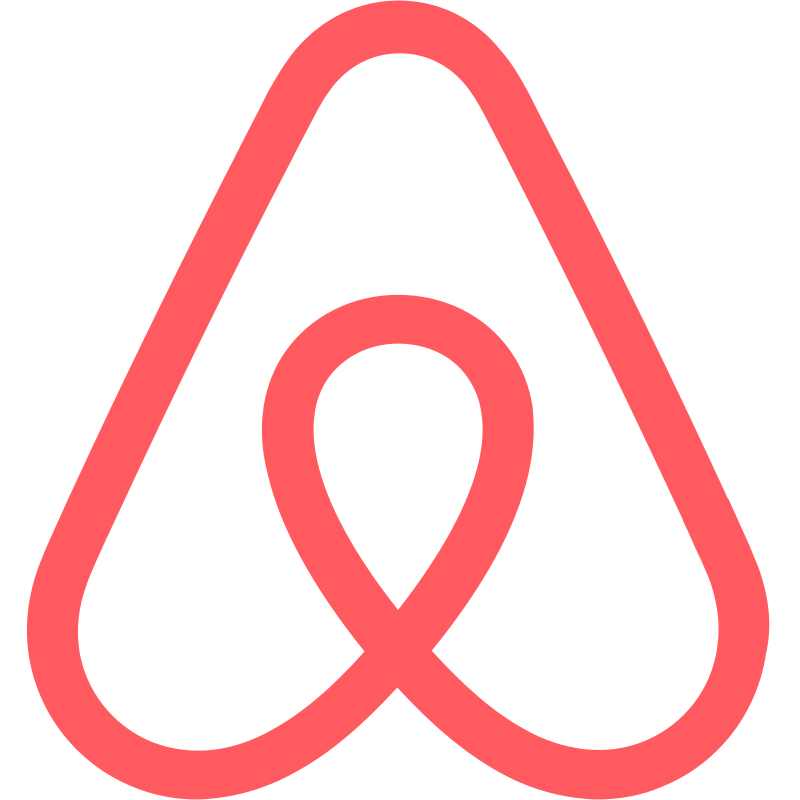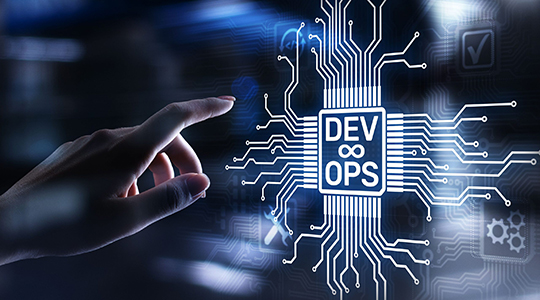Whether you are a startup entering the tech world or a well-established company planning to level up its internal processes, a software development journey might seem like an unbearable burden. Even business experience with development projects might struggle to determine their course of action for a new initiative.
An average software development project requires a lot of resources, creating many risks companies need to consider. What if your initial idea proves itself as inviable? What if some unexpected difficulties arise and inflate your budget?
Fortunately, the software development industry has already devised a solution for such concerns, and it is a minimal viable product (MVP). MVP development services allow companies to validate their software concepts with a modest budget and a short timeline, preventing expensive mistakes from happening.
But how to build a minimum viable product? And how can you be sure that you need it? Find out the answers with Program-Ace, a software development company with decades of experience.
The Basics of MVP Development
What Is MVP Development?
A minimum viable product has become a game changer in software development. At its core, MVP is a simple version of your software that includes a minimal amount of features to be usable. At the same time, MVP is more than a basic product iteration; it's a calculated product development approach that combines vision and pragmatism.
The primary objective of an MVP is to introduce a product that encapsulates the essential features required to meet the needs of early adopters. This approach ensures that businesses can validate their product ideas with minimal resources, reducing both financial risk and time to market. But it's not just about launching quickly; it's about launching smartly. When focusing on the core functionalities, businesses can ensure they're addressing genuine market needs without getting sidetracked by superfluous features.
Imagine charting a voyage across unexplored seas. An MVP acts as both the ship and the compass. The ship, streamlined and efficient, is built to navigate the waters effectively. Conversely, the compass ensures the journey remains on course, guided by real-world user feedback.
This feedback-driven approach is the backbone of every MVP development project. It's not a one-and-done deal. Instead, it's a continuous loop of development, feedback, and refinement. As the market responds, the product evolves, ensuring it remains relevant and valuable.
We believe that developing an MVP is about striking a balance. It helps to understand the fine line between what's essential and what's optional, ensuring that companies deliver value right from the outset while also laying a solid foundation for future growth and iterations.
The Purpose of MVP Building
MVP chases a distinct, strategic purpose in the bustling product development arena. At its heart, an MVP is designed to gather the core features that address a specific market need and ensure that businesses can gauge real-world interest and demand without overextending resources.
The MVP approach is akin to a litmus test. Instead of diving headfirst into full-fledged development, companies can test the waters within the market, collecting invaluable feedback from early adopters. This feedback validates the product's viability and offers insights for refinement and enhancement.
As we mentioned, MVPs also mitigate risk. Businesses can avoid costly missteps and pivot based on user needs by focusing on core functionalities and launching to a select audience. MVP building aims to combine efficiency with efficacy, ensuring that product development is agile and aligned with market demands.
The Main MVP Development Standards
MVP projects differ from full-scale development initiatives. To truly serve its goal and become a test-drive for a company, the development company should follow the next standards when building a minimum viable product.
Simplicity
At its core, an MVP champions clarity and focus. It's not about inundating the user with profound features but delivering a streamlined product emphasizing core functionalities. Like a sculptor chiseling away excess, the MVP process hones in on what's essential.
Relevance
An MVP isn't a shot in the dark. It's a targeted solution crafted to address a tangible problem or gap in the market. By ensuring relevance, businesses can resonate with their target audience, meeting their genuine needs even with minimal functionality.
Adaptability
The MVP approach recognizes that the project isn’t completed after the first or second iteration. Designed with foresight, MVPs are built to change and evolve, ensuring they can scale and adapt to feedback and changing market dynamics.
Feedback-driven
An MVP's backbone is feedback. Basically, the main focus of any MVP development is the product launch and initiated dialogue with users. This feedback-centric approach ensures the product is continually refined and aligned more closely with user expectations.
MVP Development vs. PoC vs. Prototyping
MVP, PoC, and prototype are distinct stages in product development, each serving a unique purpose. Basically, we can explain these three terms as follows:
- an MVP is an essential product version targeting early adopters to validate market demand;
- a PoC, or Proof of Concept, demonstrates the feasibility of an idea without being a complete product;
- a prototype is a tangible or interactive representation of a product used mainly for visualization and testing.
Understanding the differences between these stages ensures a more strategic and effective approach to product development, so let’s compare each concept more thoroughly.
| Aspect | MVP | PoC | Prototyping |
| Purpose | Validate market demand | Prove idea feasibility | Visualize and test a concept |
| Audience | Early adopters | Internal stakeholders | Designers, developers, stakeholders |
| Development | Basic version with core features | Demonstration of a concept | Preliminary version for feedback |
| Feedback Loop | Yes, for product refinement | Not primarily | Used to refine design and functionality |
Why Do Companies Develop MVP?
You can see that the business value of MVP is considerable, especially for projects with huge scope. Both startups and established enterprises recognize the immense value of MVP development, and here's why:
The business landscape is fraught with uncertainties. MVPs act as a safety net, allowing companies to dip their toes into the market without taking a full plunge. By presenting a basic product version, businesses can gauge its viability and potential reception and protect themselves from venturing too far down a potentially unfruitful path.
Usually, financial concerns play a massive role in determining product development strategy. In turn, MVPs emphasize core functionalities so companies can avoid resources being spread thin over non-essential functionalities. This focus conserves budgets and directs efforts toward what truly matters for product viability.
Speed is essential to capture market share. MVPs streamline the development process, cutting through potential bottlenecks and excessives, guaranteeing a swift and seamless product launch. This agility allows businesses to seize opportunities, rapidly connect with the core audience, and establish a foothold before competitors can react.
An MVP is more than just a product; it's a conversation starter. Companies can gather direct, unfiltered feedback by launching to a select audience. This dialogue with users provides invaluable insights, shaping the product's evolution and ensuring that the development team truly understands the needs of the targeted users.
MVP Development Process

The journey of building an MVP is a meticulous blend of strategy, understanding, and execution. It's a roadmap that guides businesses from a nascent idea to a tangible product, ready to face the real-world market. Let's delve into this step-by-step process you need to follow to build an MVP:
1. Market Research. Every great product begins with a question: What does the market need? This phase is about immersing oneself in the target audience's world and understanding their pain points, desires, and behaviors. Through surveys, competitor analysis, and user interviews, businesses can glean insights that form the bedrock of the MVP.
2. Defining Core Features. With a clear understanding of the market, the next step is to distill the product idea into its essence. What are the fundamental features that address the identified needs? The team needs to distinguish the most crucial functionalities from unnecessary frills and line up priorities that will determine the development plan.
3. Design & Development. During this stage, the MVP starts taking shape. Designers line up user experience and craft intuitive user interfaces while developers build robust architectures and fill them with necessary features. Throughout this phase, scalability remains a focal point, ensuring the MVP can grow and evolve in subsequent iterations.
4. Launch & Feedback Gathering. Once the first version of the MVP is ready, it's introduced to a selected audience. This controlled launch serves a dual purpose: it allows businesses to gauge initial reception and, more importantly, collect invaluable feedback. Every piece of user feedback is a goldmine of insights, pointing towards areas of improvement.
5. Iteration. The MVP journey doesn't end at launch; it merely enters a new phase. Armed with user feedback, businesses embark on a cycle of refinement. If necessary, the team tweaks features introduces new functionalities, and addresses the identified issues. This iterative process ensures that the product meets market demands and user expectations.
The MVP development stages imply a dynamic dance of research, creation, feedback, and evolution, ensuring that businesses launch not a passable product but a solution that resonates with their audience.
Main Mistakes to Avoid When Developing an MVP
When you build a minimum viable product, you must carefully consider your actions, as any misstep might divert you from the MVP’s final vision. The best way to avoid pitfalls is to learn them beforehand. So, based on our experience, we have gathered the main mistakes the teams can make when developing an MVP.
Overcomplicating
An MVP's strength lies in its simplicity. By inundating it with excessive features, its core value can become obscured. It's essential to remember that the MVP is a starting point, not the final product. Focus on the essentials and resist the urge to add all conceivable features.
Ignoring Feedback
An MVP is a feedback magnet. Its primary purpose is to gather insights from real users. So, disregarding this feedback undermines the MVP's essence and kills the primary value you could have gotten with it. At the same time, it risks alienating potential customers.
Poor Market Research
An MVP that doesn't resonate with its target audience is like a ship without a compass. When you build your MVP only by leaning on your assumptions or intuition, you risk investing in a useless project that won’t help you validate anything.
Delaying Launch
Perfection is a noble pursuit, but waiting too long for a flawless product in the MVP world can mean missed opportunities. Speed is crucial, and it's better to launch and iterate based on real-world feedback than delay a launch.
Top Examples of Successful MVP Building
It is no wonder that the concept of MVP development is very popular, considering the value it can give businesses. Almost every successful web or mobile app we use started as an MVP, gradually growing into a full-scale service with wide functionality. Here, we gathered the most vivid examples of that.

Airbnb. Airbnb's journey began when its founders, Brian Chesky, and Joe Gebbia, decided to rent air mattresses in their San Francisco apartment during a design conference. They created a basic website named Air Bed & Breakfast to facilitate this. This simple concept validated a demand for affordable, short-term city living spaces. Over time, the platform evolved, allowing users worldwide to list and book diverse accommodations, from single rooms to entire homes.

X/Twitter. Unexpectedly, X/Twitter started as a podcast platform Odeo, but Apple pushed it out of the market with podcasts on iTunes. While brainstorming new ideas, Odeo's team developed twttr, an SMS-based platform where users could broadcast short status messages to their friends. The simplicity of sharing bite-sized updates quickly gained traction. The platform transitioned to the web, expanding its features and eventually becoming the global microblogging service we recognize today.

Spotify. Before its global launch, Spotify was introduced as an MVP in the Nordic countries. The service aimed to provide users with a vast music library with free (ad-supported) and premium models. Initially equipped with a simple music streaming function, the MVP succeeded in the Nordic region and demonstrated significant demand for such a service. Spotify then expanded to other markets, continually refining its offerings based on user feedback and market trends.

Uber. Uber began its journey as UberCab, a basic app with a simple interface connecting riders with available car drivers in San Francisco. Firstly, the founders offered their service to their friends, testing the concept. The immediate success of this MVP showcased a demand for convenient, on-demand transportation. Uber quickly iterated on its model, expanding worldwide and introducing new features, like real-time driver monitoring, ride cost estimation, or automatic credit card payments.
Develop an MVP with Program-Ace
MVP has undeniable value for businesses and startups in the initial steps of product development. It helps to validate an idea and gather feedback from real users rapidly. However, the path to success in developing an MVP lies through cooperation with a strong development team. Wrong approach or negligence on any step will undermine any efforts and won’t lead to fruitful results.
Program-Ace, an experienced custom software development company, can become a partner that will guide you through the intricate details of MVP development. We know how to efficiently organize the MVP development process and ensure that your MVP project reaches its main goals. Feel free to contact us, as we will gladly discuss the opportunities for cooperation!













